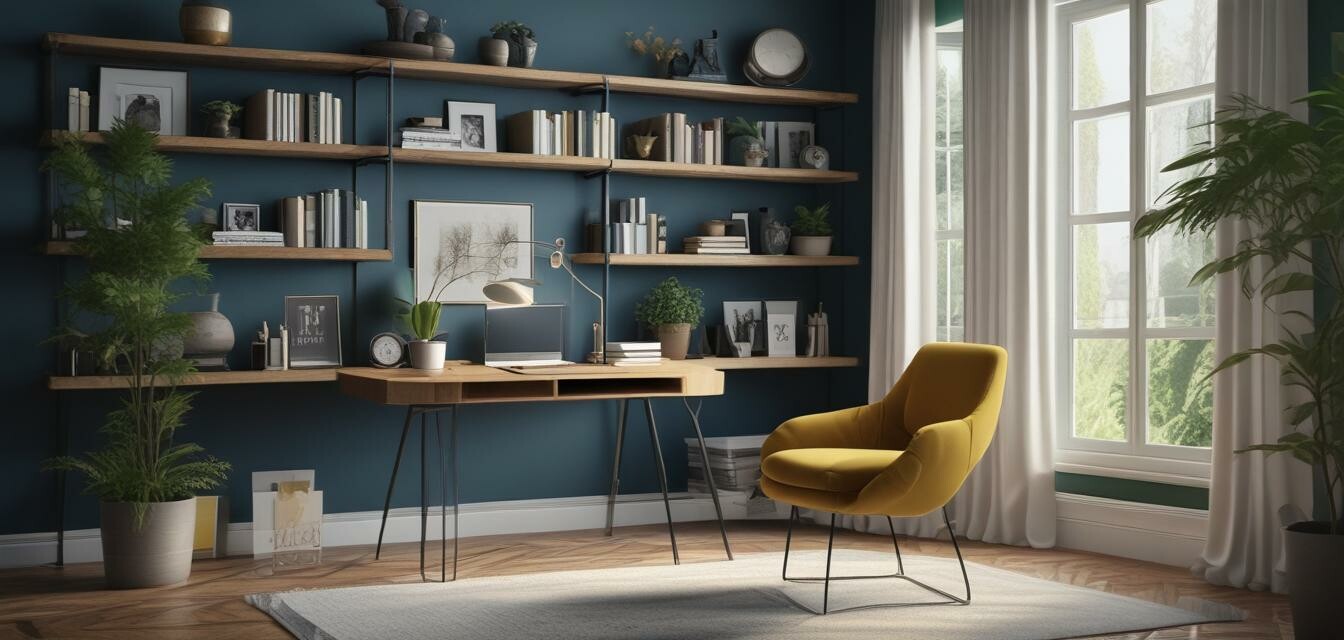
Color Psychology in Home Office Design
Key Takeaways
- Colors can significantly impact mood and productivity.
- Blue is calming, yellow can induce energy, and green promotes harmony.
- Neutral colors balance the design and create a serene environment.
- Personal preferences and the specific work type should guide color choices.
- Combining colors thoughtfully enhances the overall workspace vibe.
When it comes to designing your home office, the color palette you choose plays a crucial role in establishing the right vibe. Colors can evoke emotions, foster creativity, and even boost your productivity. Understanding color psychology can help transform your workspace into a haven of inspiration and focus. Let's explore how different colors can affect your mood and productivity, along with practical tips for incorporating them into your home office design.
Understanding color psychology
Color psychology is the study of how colors influence human emotions and behaviors. Each color has its own unique characteristics, affecting our thoughts and feelings in various ways. When designing a workspace, it is essential to consider these psychological effects to create an environment that supports your work style.
Common color associations
| Color | Associations | Best Used For |
|---|---|---|
| Blue | Calmness, trust, and stability | Focus-heavy tasks |
| Yellow | Energy, optimism, and happiness | Creative brainstorming |
| Green | Harmony, balance, and relaxation | Long-term projects |
| Red | Passion, urgency, and intensity | Deadline-driven tasks |
| Neutral (grey, beige) | Calm, balance, and sophistication | Any work requiring focus |
Colors for your home office
Now that we have a grasp on the psychology of colors, let's look into specific examples of how you can apply these colors to your home office.
Creating your color scheme
- Blue: Use blue accents in your decor, such as walls, desk accessories, or even artwork. This color is known for promoting calmness and focus, ideal for those who work with complex ideas.
- Yellow: Incorporate yellow through chair cushions, wall art, or decorative pieces. This vibrant color can spark creativity and inject energy into your workspace.
- Green: Opt for plants or green tonality in your office setup. Green adds natural warmth while enhancing concentration and reducing fatigue.
- Red: Use sparingly; red can be overwhelming. Consider a single red accent wall or a bright red piece of decor to inspire passion and urgency.
- Neutral tones: Combine neutrals with pops of color. They serve as a foundation, allowing for versatility while creating a calm atmosphere.
Examples of effective color combinations
Here are some effective color combinations you can use to help inspire your home office design:
| Combination | Effect | Best For |
|---|---|---|
| Blue & Grey | Promotes stability and calmness | Corporate or freelance work setups |
| Green & Beige | Encourages balance and relaxation | Creative businesses or long-term projects |
| Yellow & White | Inspires energy and brightness | Brainstorming or start-up environments |
| Red & Black | Creates intensity and urgency | Deadline-focused tasks |
| Blue, Yellow & Neutral | Balances calmness with vibrancy | Any work requiring creativity and focus |
Tips for choosing colors
Beginners section
- Start with a color wheel to visualize how colors relate to each other.
- Select a color that resonates with your needs—whether it’s productivity, creativity, or calmness.
- Test paint samples on your walls to view them under different lighting conditions.
- Accessorize with colorful items that can easily be changed, like desk organizers or artwork.
- Maintain harmony by using 60-30-10 rule: 60% of a dominant color, 30% of a secondary color, and 10% of an accent color.
Final thoughts
Your home office should not only reflect your personality but also enhance your work performance. By understanding color psychology, you can strategically choose colors that help you achieve your goals. Remember that the colors you select should align with both your personal preferences and the type of work you do. Experiment with different combinations, keep it balanced, and transform your workspace into a productive haven!
Pros
- Enhanced mood and productivity based on color choice.
- Customizable designs to fit personal style and work needs.
- Creates an inspiring and motivating environment.
Cons
- Color preferences can be subjective and vary widely.
- Overuse of bright colors can lead to overwhelmed feelings.
- Changing colors can sometimes require additional work when redecorating.
For more ideas on designing your perfect workspace, visit our Workspace Inspiration category or explore Buying Guides for tips on selecting the right furniture.
